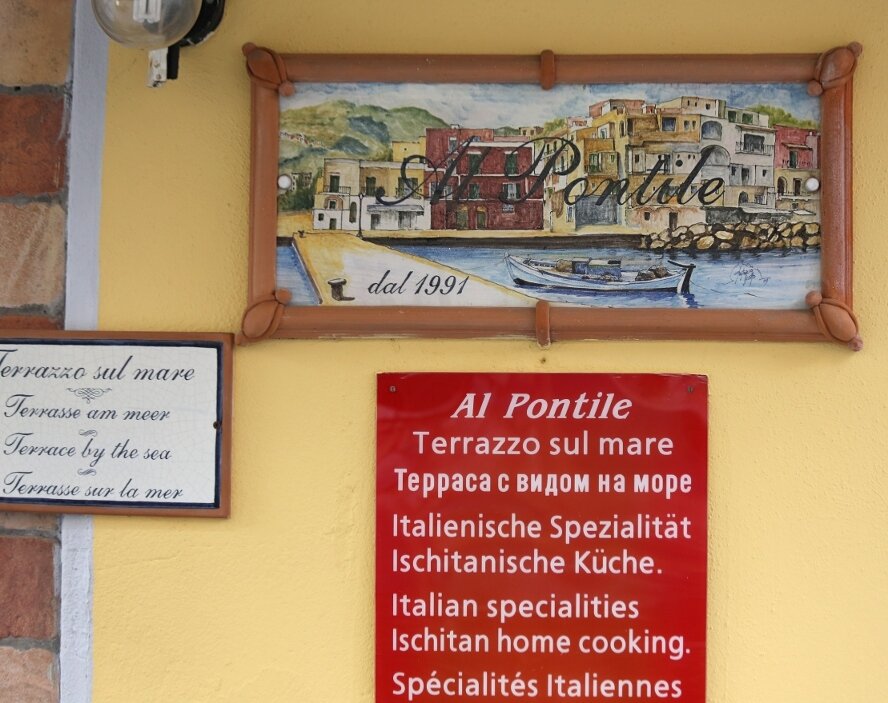Via Luigi Mazella, Ischia Ponte
From the house of Malcovati I headed to via Luigi Mazella, the main street of the most popular tourist quarter. The first attraction was a small square with an ancient fountain-source.

The bas-relief is poisonous-green color with ugly images, was not so ancient, according to the signature, it was made in 1968.

Behind the fountain, on the wall of the Holy spirit church, you can see a large scarlet panel of religious themes, made in the same style and in the same poisonous colors.

Then I looked into the church itself, whose bell tower, covered with bright glazed tiles, served me as a great reference point during yesterday walks around Villa de Luca.

The church was opened in 1674, as evidenced by the plaque.

The small chapel of the brotherhood of St. Mary of Constantinople (Chiesa di Santa Maria di Costantinopoli), built in 1626, is adjacent to the left wall of the Church of the Holy spirit. Unfortunately, the chapel was closed, I can only say that the interiors of the Church are very interesting - you can see the bright frescoes, the altar of polychrome marble, several paintings of the 18th century, as well as wooden choirs, stretching along the walls.

A little further, on the other side of the street-a beautiful Baroque facade of the Church of the assumption of St. Mary, which is the Cathedral of Ischia.

Behind the Cathedral on the arrow Via Luigi Mazella and Via Giovanni da Procida is the building of the Maritime Museum, known as the "Clock tower".

The building was built in 1759 and served a variety of functions - from the parish Council to the prison. Since 1898, it housed the administration of Ischia Ponte. In the 50-60 years of the twentieth century, the city center moved closer to the port and city officials moved to a new building, and the clock tower housed the primary school. Finally, on December 15, 1996, the Maritime Museum was opened in the building.

There are two memorial plaques on the facades - one dedicated to the memory of Vittorio Emanuele II, the other reminds of Bishop Girolamo Roca, whose efforts led to the completion of the hundred-year construction of the aqueduct in Pilastri.

My attention was drawn to the drain pipe going inside the house. During the rain, the water from the roof does not leak under the feet of passers-by, and goes into the sewer. The design is made of copper, and does not disfigure the facade of the building, on the contrary.

Such signs telling about the phenomena of saints and other miracles can be found on many houses of Ischia Ponte.

From the old town Hall to the bridge leading to the Aragonese castle, there is only one quarter left, where souvenir shops occupy both sides of the street.

Firm souvenir of the island are the ceramics, production of numerous workshops. This craft island is famous even in the times of the Greek colonies, called "Pithecusa", which in ancient Greek meant "pot".

For some reason, the most I've seen tile mural is dominated by the drinking motives.

Workshops produce not only Souvenirs, but also utilitarian objects, which locals are willing to buy to decorate their homes. Owners of mini-hotels, which is almost every house on the coast, popular and multilingual signs to attract customers.
